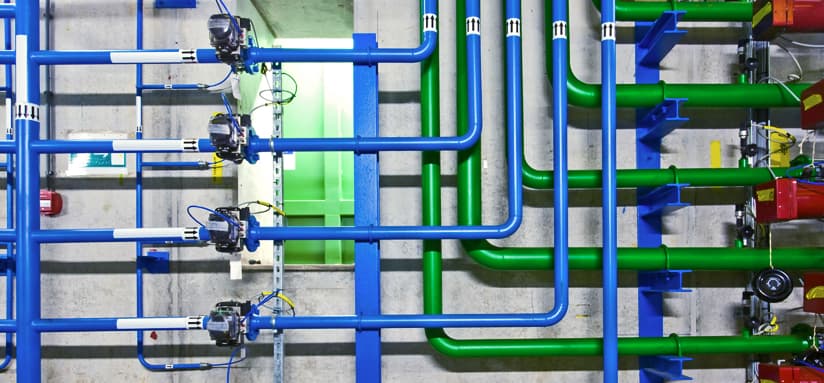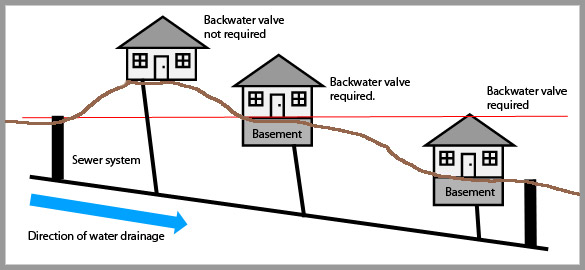What Your House's Plumbing System Works: Anatomy
Maintenance Sign-UpWe have come across this article involving Plumbing Installation 101: All You Need to Know below on the net and reckoned it made perfect sense to relate it with you here.

Comprehending exactly how your home's plumbing system works is important for each property owner. From delivering clean water for drinking, cooking, and bathing to securely getting rid of wastewater, a properly maintained pipes system is critical for your family members's health and wellness and comfort. In this extensive guide, we'll discover the detailed network that composes your home's pipes and offer pointers on maintenance, upgrades, and handling usual problems.
Introduction
Your home's pipes system is more than simply a network of pipes; it's an intricate system that ensures you have access to clean water and reliable wastewater removal. Recognizing its elements and how they interact can help you avoid costly repair services and guarantee every little thing runs smoothly.
Standard Elements of a Plumbing System
Pipelines and Tubing
At the heart of your pipes system are the pipes and tubing that lug water throughout your home. These can be made of numerous materials such as copper, PVC, or PEX, each with its benefits in regards to sturdiness and cost-effectiveness.
Fixtures: Sinks, Toilets, Showers, etc.
Fixtures like sinks, commodes, showers, and bathtubs are where water is utilized in your house. Comprehending just how these fixtures connect to the pipes system helps in diagnosing issues and planning upgrades.
Valves and Shut-off Points
Shutoffs regulate the flow of water in your plumbing system. Shut-off shutoffs are critical during emergencies or when you require to make repair work, allowing you to isolate parts of the system without interrupting water circulation to the whole house.
Water System System
Key Water Line
The main water line links your home to the local supply of water or a personal well. It's where water enters your home and is dispersed to various fixtures.
Water Meter and Pressure Regulatory Authority
The water meter actions your water usage, while a pressure regulatory authority makes certain that water flows at a safe pressure throughout your home's plumbing system, protecting against damage to pipes and fixtures.
Cold Water vs. Hot Water Lines
Comprehending the difference in between cold water lines, which provide water directly from the main, and hot water lines, which carry heated water from the water heater, assists in repairing and planning for upgrades.
Drainage System
Drain Pipeline and Traps
Drain pipes carry wastewater away from sinks, showers, and bathrooms to the sewage system or septic tank. Traps prevent sewer gases from entering your home and also trap debris that might trigger blockages.
Ventilation Pipes
Ventilation pipes allow air into the drain system, avoiding suction that might slow drainage and cause traps to empty. Proper ventilation is essential for keeping the stability of your pipes system.
Significance of Correct Drain
Making sure proper drainage protects against back-ups and water damage. Consistently cleaning up drains and maintaining catches can stop costly repairs and expand the life of your plumbing system.
Water Furnace
Kinds Of Water Heaters
Hot water heater can be tankless or standard tank-style. Tankless heaters warmth water as needed, while storage tanks keep warmed water for instant use.
How Water Heaters Attach to the Pipes System
Comprehending just how water heaters attach to both the cold water supply and warm water circulation lines assists in diagnosing problems like inadequate hot water or leakages.
Maintenance Tips for Water Heaters
Regularly purging your water heater to remove debris, inspecting the temperature level settings, and inspecting for leakages can extend its lifespan and boost power effectiveness.
Common Pipes Problems
Leakages and Their Causes
Leaks can take place as a result of maturing pipelines, loose installations, or high water pressure. Attending to leaks without delay protects against water damages and mold growth.
Obstructions and Clogs
Clogs in drains and toilets are often brought on by purging non-flushable items or a build-up of grease and hair. Using drainpipe screens and bearing in mind what decreases your drains can stop blockages.
Signs of Pipes Problems to Look For
Low water stress, slow drains pipes, foul odors, or unusually high water costs are signs of possible plumbing troubles that should be resolved quickly.
Pipes Maintenance Tips
Routine Inspections and Checks
Set up annual pipes inspections to capture issues early. Look for indicators of leaks, rust, or mineral build-up in faucets and showerheads.
Do It Yourself Maintenance Tasks
Basic jobs like cleaning tap aerators, looking for toilet leakages making use of dye tablets, or insulating subjected pipelines in cold climates can protect against major plumbing problems.
When to Call a Specialist Plumbing
Know when a pipes concern requires expert competence. Trying complex repair work without correct expertise can lead to more damages and greater repair costs.
Upgrading Your Pipes System
Factors for Updating
Upgrading to water-efficient fixtures or changing old pipelines can boost water quality, decrease water expenses, and increase the value of your home.
Modern Plumbing Technologies and Their Benefits
Explore innovations like wise leakage detectors, water-saving commodes, and energy-efficient hot water heater that can conserve cash and lower ecological influence.
Cost Considerations and ROI
Determine the in advance expenses versus long-lasting cost savings when thinking about plumbing upgrades. Numerous upgrades spend for themselves with minimized energy expenses and fewer repair work.
Environmental Effect and Conservation
Water-Saving Fixtures and Appliances
Installing low-flow faucets, showerheads, and toilets can dramatically decrease water usage without sacrificing efficiency.
Tips for Lowering Water Use
Easy habits like dealing with leaks quickly, taking shorter showers, and running complete lots of washing and meals can preserve water and lower your utility bills.
Eco-Friendly Pipes Options
Think about sustainable plumbing materials like bamboo for floor covering, which is durable and green, or recycled glass for kitchen counters.
Emergency Preparedness
Actions to Take Throughout a Pipes Emergency
Know where your shut-off shutoffs lie and how to switch off the water in case of a burst pipe or significant leakage.
Significance of Having Emergency Situation Calls Useful
Keep call information for neighborhood plumbers or emergency situation services conveniently offered for quick feedback throughout a pipes dilemma.
Do It Yourself Emergency Fixes (When Relevant).
Short-term repairs like using duct tape to spot a leaking pipeline or placing a container under a trickling tap can reduce damages until a specialist plumbing shows up.
Conclusion.
Understanding the composition of your home's pipes system empowers you to preserve it properly, saving time and money on repair services. By adhering to regular maintenance regimens and remaining informed regarding modern-day pipes technologies, you can ensure your pipes system operates effectively for several years ahead.
Exploring Your Homes Plumbing Anatomy
Water Supply System
Main Water Line: This is where water enters your home from the municipal supply or a private well.
Water Meter: Typically located near where the main water line enters the property, it measures the amount of water used.
Shutoff Valve: It s crucial to know where this is in case of emergencies. It allows you to turn off the water supply to the entire house.
Pipes and Fittings: These distribute water throughout your home. Materials can include copper, PVC, or PEX.
Drain-Waste-Vent (DWV) System
Drains: Located in sinks, showers, and tubs, these carry wastewater away.
Traps: U-shaped pipes under sinks that hold standing water, blocking sewer gases from entering the home.
Vents: Pipes that lead from the DWV system to the outside, preventing vacuum formation and allowing gases to escape.
Sewer Line: Carries all wastewater from the home to the municipal sewer system or a septic tank.
Fixtures and Appliances
Sinks, Toilets, and Showers
Dishwashers and Washing Machines
Water Heaters
Maintenance Tips
Regularly check for leaks in exposed pipes and around fixtures.
Inspect the water heater annually for signs of wear.
Clean drains and traps to prevent clogs and odors.
Know how to shut off water to individual fixtures.
When to Call a Professional
Major leaks or burst pipes
Installation of new pipes or fixtures
Septic tank issues
Remodeling projects that involve plumbing changes
Conclusion
Understanding the anatomy of your home's plumbing is key to maintaining a functional and efficient system. Regular checks and knowing when to call in the experts can save you time, money, and stress.
https://www.mavyn.com/blog/exploring-your-homes-plumbing-anatomy

Exploring Your Homes Plumbing Anatomy
Water Supply System
Drain-Waste-Vent (DWV) System
Fixtures and Appliances
Maintenance Tips
When to Call a Professional
Conclusion
Understanding the anatomy of your home's plumbing is key to maintaining a functional and efficient system. Regular checks and knowing when to call in the experts can save you time, money, and stress.
https://www.mavyn.com/blog/exploring-your-homes-plumbing-anatomy
As a reader on , I assumed sharing that piece of content was beneficial. Sharing is nice. You just don't know, you may just be doing someone a favor. We thank you for your readership.
Maintenance Sign-Up